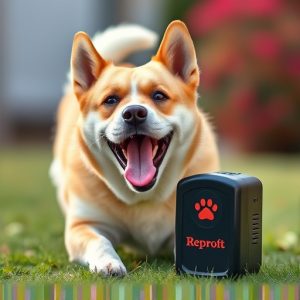Sonic Deterrent Systems: Effective Dog Barking Control Solution
Excessive dog barking can stem from anxiety, fear, boredom, or attention-seeking, with triggers incl…….
Excessive dog barking can stem from anxiety, fear, boredom, or attention-seeking, with triggers including noise and unfamiliar people. Sonic deterrent systems control barking by emitting inaudible high-frequency sound waves, adjusting to each dog's unique needs and environment. Effective implementation involves selecting a device with adjustable settings, gradual training using positive reinforcement, and rewarding quiet behavior.
Unwanted dog barking can be a nuisance, but it’s essential to understand its causes before finding a solution. This article explores effective methods to prevent excessive barking through electronic systems, focusing on sonic deterrents. We’ll delve into how these devices use sound waves to calm dogs without causing harm. Additionally, we’ll guide you through the implementation and training process for optimal results, introducing the powerful Sonic Deterrent Range for Dogs as a game-changer in pet behavior management.
- Understanding Dog Barking and Its Causes
- How Sonic Deterrent Systems Work for Effective Bark Control
- Implementing and Training the Electronic System for Optimal Results
Understanding Dog Barking and Its Causes
Dog barking is a natural form of communication for canines, but it can sometimes become excessive and problematic. Understanding why dogs bark is essential in addressing and preventing unwanted barking. There are several factors that contribute to a dog’s barking behavior, including anxiety, fear, territorial instincts, boredom, or even attention-seeking. For example, a dog may bark due to the sonic deterrent range for dogs when it perceives a threat or feels uncomfortable. Identifying these triggers is crucial in finding effective solutions.
Dogs often bark as a response to sensory stimuli like loud noises, unfamiliar people or animals, or changes in their environment. Additionally, certain breeds are predisposed to barking more than others due to their hunting or herding instincts. Overbarking can be a symptom of separation anxiety or even boredom, highlighting the need for enrichment and training methods tailored to address these specific causes.
How Sonic Deterrent Systems Work for Effective Bark Control
Sonic deterrent systems have emerged as a popular and effective method for controlling excessive dog barking. These devices operate by emitting high-frequency sound waves that are inaudible to humans but disruptive to dogs. When a dog barks, the system detects the sound and promptly releases the sonic signal, which startles the animal without causing any harm. This sudden interruption helps to break the barking habit over time.
The effectiveness of these systems lies in their ability to target specific behaviors without affecting other pets or humans in the vicinity. The sonic deterrent range for dogs is typically adjustable, allowing users to set a boundary within which the device will activate. This feature ensures that only the problematic barking is addressed, promoting positive reinforcement and training. Moreover, many modern models offer automatic activation and deactivation based on sound levels, enhancing their efficiency and user-friendliness.
Implementing and Training the Electronic System for Optimal Results
Implementing and training an electronic dog barking prevention system requires a strategic approach to achieve optimal results. The first step is selecting a device with adjustable settings, allowing you to customize the sonic deterrent range based on your dog’s behavior and environment. These systems often include various sensitivity levels and activation triggers, such as sound or motion sensors. By setting these parameters correctly, you can ensure the device only activates when necessary, minimizing false triggers and any potential discomfort for your pet.
Training is key to the system’s effectiveness. Start by introducing the device in a controlled manner, allowing your dog to get accustomed to its presence. Use positive reinforcement techniques during training sessions to encourage desired behavior. For instance, reward your dog with treats or praise when they remain quiet while the device is active, helping them associate silence with the pleasant experience of avoiding unpleasant sonic deterrents. Regular practice and consistent application of these training methods will eventually condition your dog to understand and respond appropriately to the system’s cues.
Electronic systems designed with sonic deterrents offer a humane and effective solution to dog barking issues. By understanding the causes behind excessive barking, these devices utilize high-frequency sound waves to gently discourage unwanted behavior without causing harm. With proper implementation and training, pet owners can achieve optimal results, fostering a quieter and more peaceful environment for both the dog and the neighborhood. The Sonic Deterrent Range for Dogs provides a non-invasive approach to bark control, ensuring a harmonious balance between pets’ well-being and community living.


